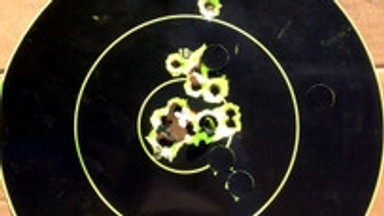Posted by Dan Carlson on Aug 5th 2025
Getting your rifle ready for hunting season
Getting Your Rifle Ready for Hunting Season
As hunting season approaches, it’s time to make sure your rifle is in top condition. A reliable, well-maintained rifle not only improves accuracy but also ensures safety and confidence in the field. Here’s a step-by-step guide to getting your rifle ready for hunting season.
“No need to sight-in if I didn’t miss last year and haven’t changed anything,” he reasoned.
To each his own. The fellow may have been lucky. But I know a guide in the same area who told me his two biggest gripes were clients that showed up out of shape or showed a distinct lack of skill and safety knowledge regarding their firearms. That same guide told me a story I’ll never forget.
He was guiding a mule deer hunt in Wyoming for a group of guys from a state “back east” and they’d just unloaded gear from their trucks as legal shooting hours began. There were “nearly a dozen” deer hunters standing around with their rifles listening to the guide’s instructions for the day when a splendid mulie buck appeared and trotted by the group of men without apparent concern. The buck was less than 50 yards away and, as the guide tells it, each hunter in the group emptied his rifle at the deer. No one came close to hitting it. So the guide loaded all the men back into the trucks, drove them back to his base camp and refused to take them hunting again until each showed himself able to hit a 1-gallon milk jug 100 yards away. He told me that took all morning because some hunters had arrived with new rifles that had only been bore-sighted at the store where they were purchased.
Sighting-in a rifle takes time and some ammunition but is important to do. Hunting is an experience that requires considerable planning, preparation, transportation and effort. In the end all of that comes down to one moment when the trigger is pulled. Success or failure depends on the bullet flying true and sighting-in is the only way to be certain that will happen.
You’ll need a stable rest, preferably a sled-style rifle rest , some targets and a box of the same brand and type of ammunition you plan to hunt with. Be certain you have a good, safe backstop and set up a target 25 yards away. With your gun safely and comfortably in or on a rest, aim and fire one shot at the target’s bull’s eye. If you hit within an inch of your aim point, take a second shot. A hit near the first one means you’re ready to move the target out to 100 yards.
If you’re first shot is off at 25 yards, take a second and third to be sure the miss wasn’t an anomaly. If all three shots are closely grouped on the target but not near the bull’s eye, remove the caps on the scope turrets making sure you don’t move the rifle at all from where you shot it. Being careful not to bump the rifle, turn the turrets until the scope crosshairs center in the middle of the group you shot. Replace the turret caps and try another group aimed at the center of the target. If you did everything right, the second group should be around the bull’s eye.
Once you’re sighted-in at 25 yards, set up a new target 100 yards away. I like to use Birchwood Casey Shoot•N•C targets because they make it easy to see where my shots hit. Take three shots at 100 yards. Everything’s cool if you get a nice group in the bull’s eye or a little above it. Many hunters like to see groups about two inches above the bull’s eye at 100 yards because several modern hunting calibers that are a little high at that distance hit right on at 200 yards and a little lower at 300 yards. If you’re shots are dead-on at 200 yards you should be able to send a bullet into a deer’s vitals out to a maximum range of 300 yards. Since the vast majority of big-game harvested in the U.S. is taken within 75 yards, you’re golden.
Before you case your rifle to head home, give it a careful inspection. Check to be certain all screws are tight, retaining pins seated properly and accessories firmly attached. Put a little oil on the sling swivels to reduce any friction and squeaks. Rub down your firearm with a small amount of gun oil and a soft cloth to minimize chances of corrosion and rust. Don’t deep clean the gun between sighting-in and your hunt as the disassembly and reassembly process could throw off you zero, but do slide a few cleaning patches with solvent down the bore to loosen and remove any debris and powder residue leftover from your shooting session. Follow that with a few clean and dry patches to get rid of lingering solvent.
Finally, transport your gun in a decent gun case. You can find cheap soft cases at big-box stores and I’ve used them in the past, usually with some regret later. Spending a bit more to get a good gun case will better protect your valuable firearm and it will likely last a lifetime if you don’t get crazy with it.
The better care you give your gun, the better it will serve you in the field. Keep it clean, accurate and protected during transport, and be sure to give it a good cleaning at the end of the season before it goes in the gun safe until next year.

